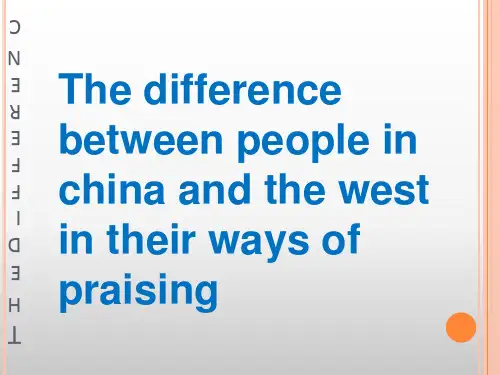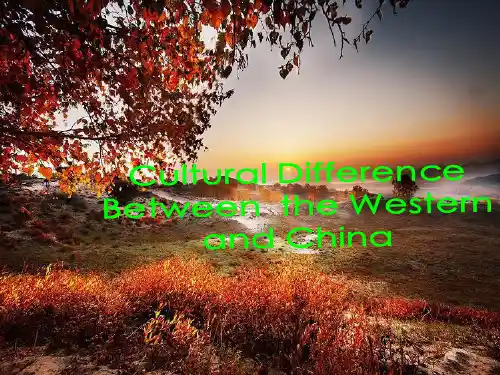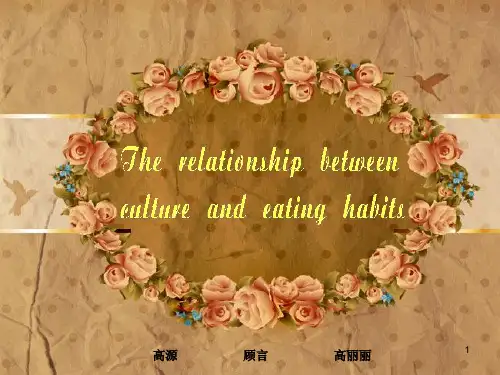中西文化差异英文版.ppt
- 格式:ppt
- 大小:4.70 MB
- 文档页数:77
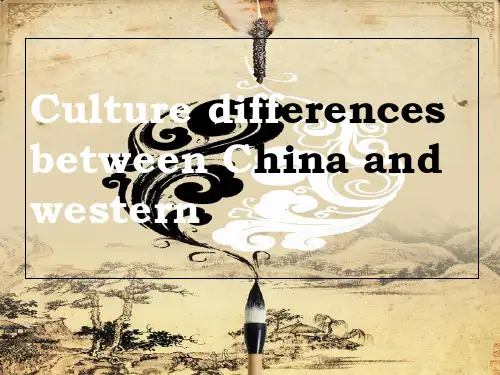
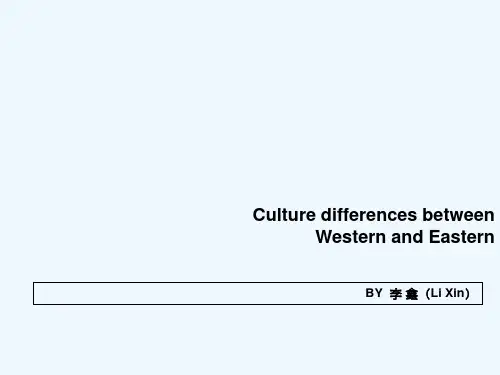
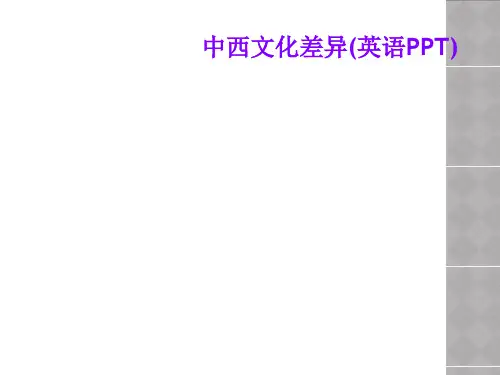
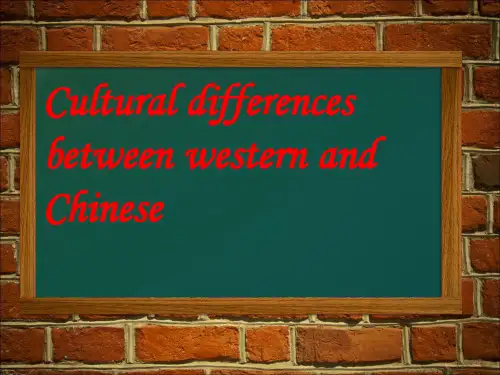
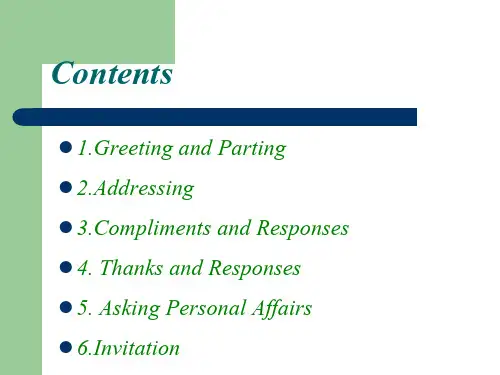
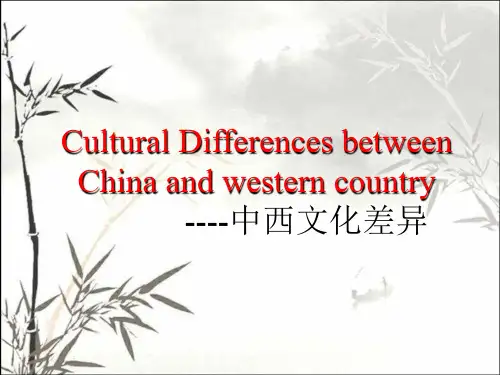
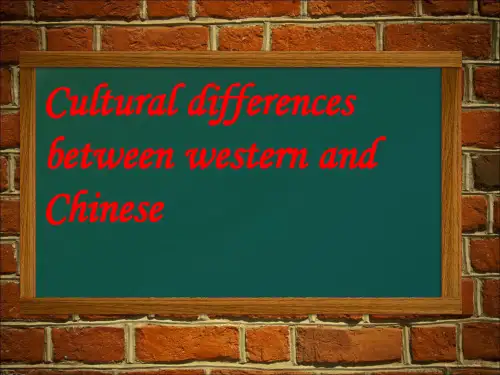
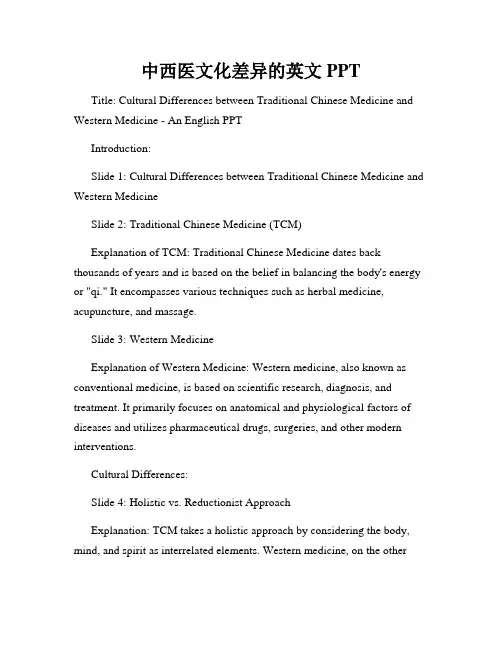
中西医文化差异的英文PPTTitle: Cultural Differences between Traditional Chinese Medicine and Western Medicine - An English PPTIntroduction:Slide 1: Cultural Differences between Traditional Chinese Medicine and Western MedicineSlide 2: Traditional Chinese Medicine (TCM)Explanation of TCM: Traditional Chinese Medicine dates back thousands of years and is based on the belief in balancing the body's energy or "qi." It encompasses various techniques such as herbal medicine, acupuncture, and massage.Slide 3: Western MedicineExplanation of Western Medicine: Western medicine, also known as conventional medicine, is based on scientific research, diagnosis, and treatment. It primarily focuses on anatomical and physiological factors of diseases and utilizes pharmaceutical drugs, surgeries, and other modern interventions.Cultural Differences:Slide 4: Holistic vs. Reductionist ApproachExplanation: TCM takes a holistic approach by considering the body, mind, and spirit as interrelated elements. Western medicine, on the otherhand, adopts a reductionist approach by analyzing and treating specific symptoms or diseases.Slide 5: Yin-Yang and Qi vs. Anatomy and PhysiologyExplanation: TCM emphasizes the balance between Yin and Yang energies and the flow of Qi. Western medicine emphasizes the study of anatomy and physiology, focusing on the structure and function of organs and body systems.Slide 6: Individualized vs. Standardized TreatmentExplanation: TCM focuses on individualized treatment, considering each person's unique constitution and imbalances. Western medicine often relies on standardized treatment protocols based on scientific research and clinical trials.Slide 7: Natural vs. Synthetic SubstancesExplanation: TCM mainly utilizes natural substances such as herbs and plants for medicinal purposes. Western medicine relies heavily on synthetic drugs and chemical compounds.Slide 8: Prevention vs. CureExplanation: TCM emphasizes preventive measures to maintain overall health and balance. Western medicine often focuses on diagnosing and treating diseases after they have occurred.Impact on Healthcare:Slide 9: Integration of TCM and Western MedicineExplanation: In recent years, there has been a growing recognition of the benefits of integrating both TCM and Western medicine, particularly in countries like China. This includes complementary therapies where patients benefit from the strengths of both practices.Slide 10: Challenges and OpportunitiesExplanation: The integration of TCM and Western medicine presents both challenges and opportunities. These include the need for standardized research and evidence-based practice, cross-cultural communication, and mutual respect for both healthcare systems.Slide 11: Cultural CompetenceExplanation: Healthcare practitioners need to develop cultural competence to understand and respect patients' beliefs and preferences regarding treatment options. This ensures patient-centered care and better healthcare outcomes.Benefits of Cultural Exchange:Slide 12: Mutual Learning and UnderstandingExplanation: Exploring the cultural differences between TCM and Western medicine promotes mutual learning and understanding between different healthcare systems. This allows for the exchange of knowledge, techniques, and advancements.Slide 13: Enhanced Research and InnovationExplanation: Collaboration between TCM and Western medicine encourages research and innovation in both fields. Combined efforts canlead to the development of new treatment options and improved healthcare practices.Slide 14: Global Healthcare ImprovementExplanation: By embracing the cultural differences between TCM and Western medicine, it is possible to improve healthcare practices on a global scale. This can lead to better health outcomes, increased patient satisfaction, and reduced healthcare costs.Conclusion:Slide 15: Embracing Cultural Differences for Better HealthcareExplanation: The cultural differences between Traditional Chinese Medicine and Western medicine provide unique perspectives and approaches to healthcare. By embracing these differences, we can foster a more inclusive and comprehensive healthcare system that benefits individuals worldwide.Slide 16: Thank YouExplanation: Any questions or discussions are welcome.Note: This is a suggested outline for the PPT content. You can expand on each slide according to your preferences and add relevant visuals or illustrations to enhance the presentation.。
